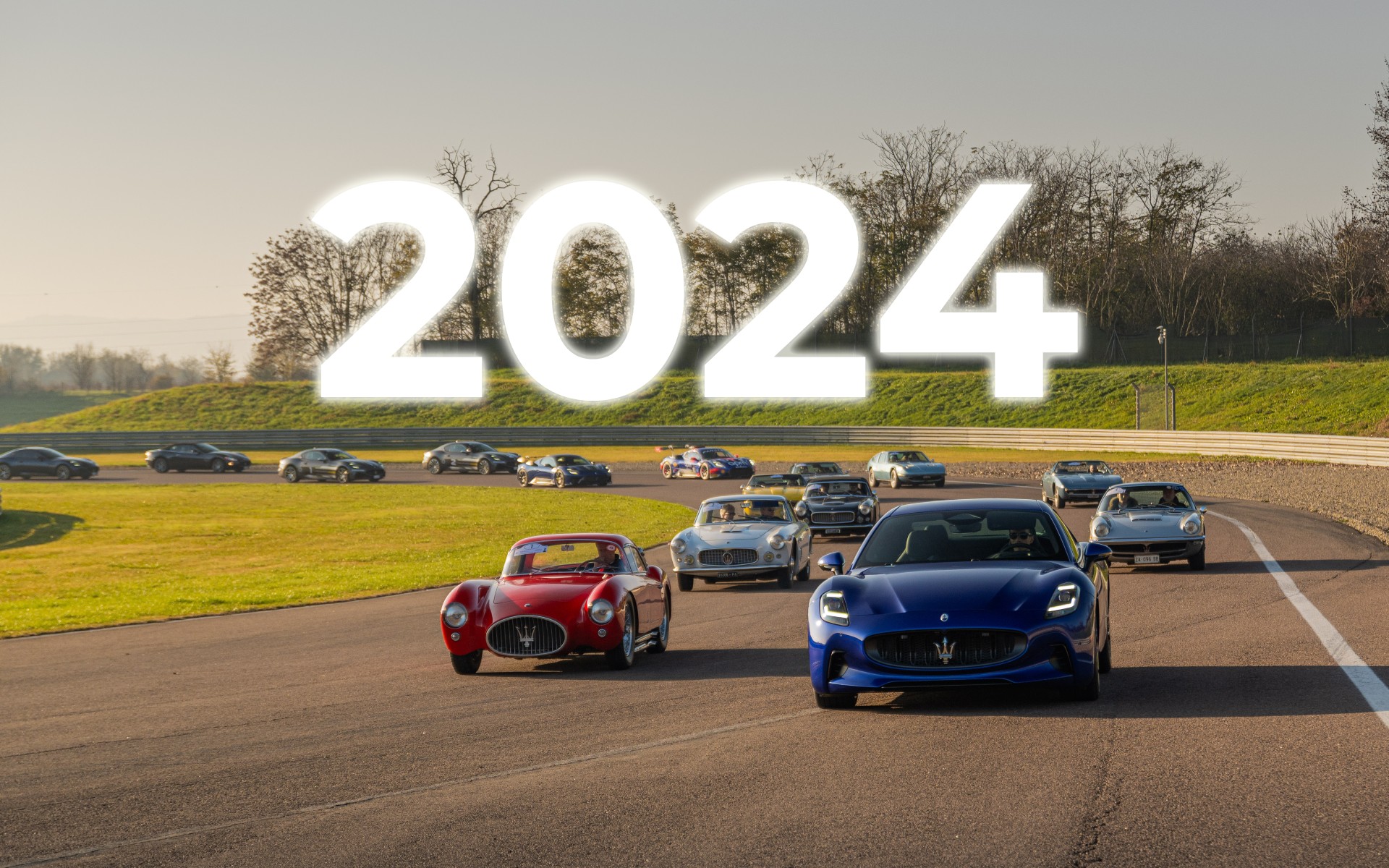24 automotive highlights of the year 2024
1. Renault 5 E-Tech is promising!
Renault introduces the Renault 5 E-Tech, an all-electric B-segment hatchback. Initial reactions to the EV are laudatory. It looks original and also drives pleasantly. Will its price convince buyers? The Renault 4 E-Tech Electric, another retro EV, will follow in 2025.
2. Toyota Land Cruiser all new
The Toyota Land Cruiser 2024 appears with a traditional ladder chassis. Designed for off-road driving, this model combines modern driver assistance systems with an improved suspension. The powertrains have been updated to meet stricter European emissions standards without compromising power. The design is a nod to earlier generations, while the interior offers more technology.
3. Škoda Elroq as a new EV
Škoda is adding the compact Elroq to its electric model range. The vehicle targets urban users and families looking for a practical EV. The Elroq is smaller than the Enyaq, but offers a similar range of technical features, including comprehensive driving assistance systems and smart storage options. Its range of over 400 kilometers is sufficient for everyday use.
4. BMW i5 all-electric
The BMW i5 brings electric drive to the 5 Series. The model offers several versions, including an all-wheel drive variant. The range exceeds 500 kilometers, depending on the configuration. The interior features a curved screen and new control technologies. BMW is thus betting on electrification of its main models.
5. Volkswagen ID.7 launched
Volkswagen is marketing the ID.7 as an electric sedan with a focus on aerodynamics and efficiency. The model features new battery technologies and software updates that improve usability. The interior includes a larger display and updated control options. The ID.7 complements Volkswagen’s electric offerings alongside the ID.4 and ID.5.
6. Tesla Model 3 revamped
Tesla is introducing the Model 3 Highland, an updated version of its popular electric sedan. The vehicle features updated bodywork and interior improvements, including better soundproofing and a larger screen. Technical specifications remain largely the same, with attention to efficiency and practicality.
7. Ferrari Purosangue remains in production
Ferrari is keeping the Purosangue in its lineup. The SUV has a V12 engine and an all-wheel drive system. The interior seats four and is equipped with high-quality materials. Ferrari emphasizes that the Purosangue is intended for daily use, in addition to sporting performance.
8. Ford Explorer as an EV
Ford is bringing back the Explorer as an electric SUV aimed at the European market. The model has a more compact size than its predecessors, but still offers ample interior space. The Explorer uses a platform developed for electric vehicles and supports fast charging.
9. Alpine A290 as a compact sports EV
Alpine introduces the A290, an electric city car with sporty features. The model is based on the platform of the Renault 5 EV, but has its own tuning and appearance. The A290 highlights Alpine’s focus on electric driving in smaller segments.
10. Chinese brands strengthen position
BYD, NIO and Xpeng are expanding their operations in Europe. New models target different price ranges and segments. The brands benefit from their strong focus on electric drives and technology integration. In countries such as the Netherlands, Germany and France, they are gaining market share.
11. Adoption of Euro 7 emissions standards.
The new standards for Euro 7 have been approved. From July 2025, Euro 7 will come into force for new gasoline cars and from July 2026 for new diesel cars. The introduction of stricter Euro 7 emissions standards requires technical modifications by automakers. These directives focus on lower pollutant emissions, with an emphasis on NOx and particulate matter. This affects the development of fuel engines and hybrid vehicles.
12. Rolls-Royce Spectre to be the first EV
Rolls-Royce is launching the Spectre, an all-electric model. The vehicle offers similar luxury and customization options as other Rolls-Royce models. The electric powertrain delivers quiet performance and meets the demand for more sustainable mobility within the luxury segment.
13. Volvo EX30 in production
The Volvo EX30 is a compact electric SUV with a focus on urban users. The model offers multiple powertrains, including an all-wheel drive version. Range varies depending on battery choice. Volvo positions the EX30 as an accessible EV.
14. Audi Q6 e-tron presented
Audi introduces the Q6 e-tron, an electric SUV built on the PPE platform. The model offers several powertrains, including a sporty S version. The interior includes the latest technologies and a redesigned infotainment system. Audi sees this model as an important expansion of its electric portfolio. The Audi A6 e-tron was also presented.
15. Hyundai Inster
In the segment of affordable EVs, the price war has really started now. After the Dacia Spring, Citroën ë-C3 and Renault 5, Hyundai is now also coming out with an affordable EV: the Hyundai Inster. This is an A-segment EV with impressive specifications. This may just become a big hit. With the Inster, Hyundai aims to make electric driving more accessible to a larger target group. Unfortunately, we do not yet know the price, but the target price for the basic version is less than 25,000 euros. The car will arrive in the Netherlands in the first quarter of 2025.
16. Fiat Topolino back as microcar
Fiat is reintroducing the Topolino, a compact electric microcar based on the Citroën Ami. Designed for urban use, the model offers low energy consumption and easy mobility. The minimalist interior emphasizes functionality, and the compact dimensions make parking and maneuvering around town easy.
17. MG Cyberster impresses
MG is expanding its offering with the Cyberster, an electric convertible that emphasizes the brand’s sporty side. The model has a low center of gravity and rear-wheel drive, contributing to driving pleasure. With a range suitable for touring, the Cyberster offers a new perspective on electric mobility.
18. Emergence of hydrogen vehicles
Hydrogen vehicles such as the Toyota Mirai and Hyundai Nexo are gaining ground in Europe. Thanks to improved infrastructure in countries such as Germany and the Netherlands, hydrogen is becoming increasingly attractive as an emission-free option for long-distance driving. These vehicles offer fast refueling times and greater range than many battery-powered models.
Euro NCAP increases requirements 19.
Euro NCAP is adjusting its testing criteria, with an additional focus on active safety systems such as automatic braking and lane assist. These changes affect how new models are designed, as manufacturers adjust to achieve higher scores in safety ratings.
20. Approval of road tax EVs.
Approval has been given to tax electric cars more heavily from 2025. Thus, it was decided in 2024 that you will pay a fixed base of BPM of 667 euros for battery-electric cars starting Jan. 1, 2025. BEVs will become slightly more expensive as a result. BEV owners will also pay road tax (MRB) starting in 2025. They will then receive a 75 percent discount based on the gasoline rate. That discount rate will be phased out over the next few years.
21. Increased focus on circular production
Car manufacturers are focusing more on the principles of a circular economy. Materials such as recycled aluminum, steel and plastic are being used more often in new models. In addition, electric vehicle batteries are being reused or recycled after use. This shift has been driven by stricter regulations and the growing demand for sustainable production.
22. Increase in software-driven vehicles.
Software is playing an increasing role in cars. Over-the-air updates are becoming common, giving vehicles new features or improvements without physical modifications. Manufacturers are also integrating more advanced infotainment systems and driver assistance systems, with AI playing an important role in improving safety and comfort.
23. Growth of subscriptions and flexible mobility solutions.
Instead of traditional purchase or lease arrangements, car manufacturers are increasingly offering subscription models. These allow customers access to a car, including maintenance and insurance, for a fixed monthly fee. This trend responds to the need for flexibility and convenience, especially in urban areas.
24. Shift to smaller, more efficient vehicles
With the growing demand for urban mobility and stricter CO₂ regulations, manufacturers are opting for smaller models with lower emissions. Compact electric vehicles and light city cars are becoming more popular, while larger vehicles are focusing more on specific target groups such as families and businesses.

